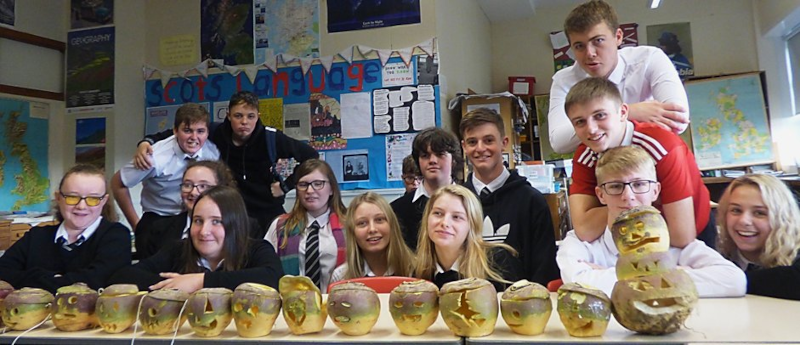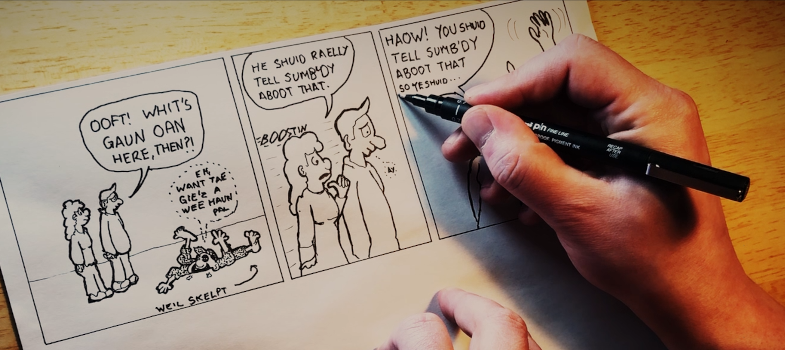Scots and Social Studies at Secondary School

© Jamie Fairbairn
9. Research on teaching Scots
Throughout this course you are engaging regularly with academic papers which explore aspects of the Scots language. In this unit you will work with the following research article and link it to the content you studied in this unit:
McDermott,
from the School of Applied Social and Policy Studies, Ulster
University, Derry, Northern Ireland, looks at both Ulster Scots in
Northern Ireland and Scots language in Scotland, exploring the extent
“to which devolution in Scotland and Northern Ireland has enhanced
the status of Scots and Ulster-Scots in areas such as broadcasting,
education, and the arts” (p. 121).
Activity 7
Using both Fairbairn’s unit and McDermott’s article, further develop your understanding of Scots, focussing particularly on Scots and links to other languages, to human rights, and its place within education as either a spoken language used today or as a way into studying the history of Scotland.
1. Read McDermott’s text and highlight aspects you personally find interesting and important.
2. Then take notes to answer these questions about the article:
a) Which historical and political factors do you see as being relevant for Scots in Scotland from reading about other languages in McDermott’s essay, such as Norwegian, Galician, Sardinian, Frisian, Scottish Gaelic and Irish. You may wish to reference discussion around language vs dialect, as mentioned in the essay.
b) Within the essay there is a quote about community activism, “governments tend only to engage with communities when ‘grassroots activists have created a firm foundation on which to build’” (p. 126). To what extent do you believe this to be true for Scots language in Scotland?
c) Former director of the Scots Language Centre, Michael Hance, is quoted as saying that campaigners for Scots often framed their cause “within a rights-based context which it was felt all parties could relate to” (p. 127). Making specific reference to schools, education and the UNCRC, consider the key links between Scots language and speakers’ rights.
d) In the ‘Regional Frameworks’ section of the essay, McDermott discusses the national Scots Language Policy drafted jointly by Scottish Government and Education Scotland in 2015, and says “The shift to promote the contemporary use of Scots marked a significant change from previous approaches which overwhelmingly focused on Scots as a historical tradition rather than a living heritage” (p. 129). How important for the future of Scots was it that the language was framed in this way?
4. Fairbairn makes many “Links wi ither tongues” comparing and contrasting Scots vocabulary with French, Gaelic, Norse, Latin and Flemish, as well as other languages.
b) Is your experience that children and young people do not consider Scots to be a language?
Gather your thoughts and opinions on this. Use evidence from your
own experience to discuss the future of Scots in your school as a
language which:
- primary children use to write poetry in
- secondary learners are given instructions for their Maths lesson in
- any child can use for music instruction
- all other examples you feel are relevant, not only in your own school but schools across different parts of Scotland.
You may want to compare your post with our model answer.
